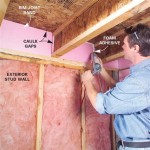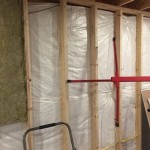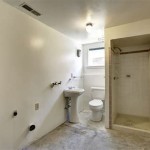Understanding Crawl Space Basements
A crawl space basement is a low-profile basement that extends partially below the ground level. It is designed to provide additional storage space or mechanical equipment while maintaining access to the home's foundation.
Characteristics of a Crawl Space Basement:
- Low Clearance: Typically ranging from 18 to 30 inches in height, crawl space basements are designed for crawling or low crouching.
- Concrete Foundation: The basement walls and floor are typically constructed from poured concrete, offering durability and moisture resistance.
- Ventilation: To prevent moisture accumulation, crawl space basements are equipped with vents to allow airflow.
Pros and Cons of Crawl Space Basements:
Pros:- Extra Storage: Provide additional space for storing seasonal items, tools, or supplies.
- Improved Home Value: Adding a crawl space basement can increase the value of your home.
- Protection from Elements: Keep sensitive items, such as electronics, out of the reach of moisture and pests.
- Limited Access: The low clearance makes it challenging to use the space for comfortable activities.
- Moisture Issues: Crawl space basements are susceptible to moisture buildup, requiring proper ventilation and waterproofing measures.
- Pest Problems: The dark, humid environment can attract pests, such as rodents and insects.
Uses of Crawl Space Basements:
Crawl space basements can be utilized for various purposes, including:
- Storage: Store seasonal decorations, furniture, and other bulky items.
- Workshop: Convert a portion of the space into a workshop for DIY projects or hobbies.
- Mechanical Room: House the home's heating, ventilation, and air conditioning (HVAC) system, water heater, and other mechanical equipment.
Maintenance Tips:
To maintain the integrity of a crawl space basement, consider the following tips:
- Regular Inspections: Check the basement for signs of moisture, pests, or structural issues.
- Ensure Proper Drainage: Grade the surrounding soil to direct water away from the basement.
- Install Vapor Barrier: Apply a plastic sheet on the ground to prevent moisture from rising.
- Keep it Clean: Remove debris and maintain cleanliness to prevent pest infestations.
Conclusion:
Crawl space basements offer additional space and functionality while providing protection for your home and belongings. However, it's crucial to consider their limitations and potential issues before investing in one. By understanding the characteristics, pros/cons, uses, and maintenance tips discussed in this article, you can make an informed decision about whether a crawl space basement is the right choice for your home.

Crawl Space Vs Basement The Brickkicker

Buying A House With Crawl Space Versus Basement

Your Best Crawl Space And Basement Waterproofing Options Pros

History Of Basements And Crawl Space Design Jes Foundation Repair

Crawl Spaces Preferred Basement Solutions Waterproofing Wall Repair

Basement Questions Crawl Spaces

The Crawlspace Argument Open Vented Vs Closed Encapsulated Myhomescience

Action Sequence Of Putting Down A Floor In Your Basement Crawl Space

How To Turn A Crawl Space Into Short Basement Studio Zerbey

Basement Vs Crawl Space What S The Difference
See Also








